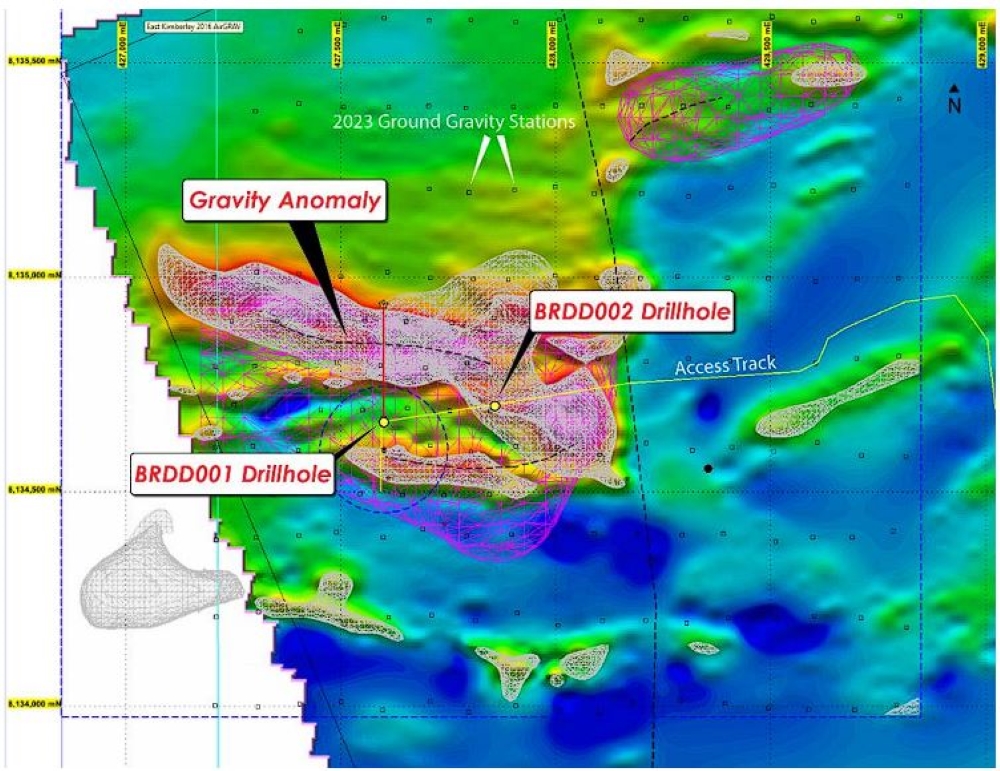Lycaon goes to untested depths to find the next Savannah nickel mine

Drilling is aimed at proving up mineralisation at depth. Pic via Getty Images.
- >13m of nickel-copper sulphides have been intersected at depth at Bow River
- Historic drilling has only been conducted near-surface and Lycaon believes a mineralised source could be deeper down
- The next hole is stepping out 250m to the east, with DHEM surveys to be conducted prior to a larger drilling program
Lycaon Resources has intersected over 13m of nickel-copper sulphides in the first 800m-deep diamond hole at Bow River, indicating the potential for “economic sulphides” in a large, >1km long gravity anomaly.
Lycaon Resources’ (ASX:LYN) Bow River project, in the East Kimberley region is along the same geological trend as Panoramic Resources’ (ASX:PAN) Savannah mine 60km to the south.
Lycaon believes its ground could host the region’s next big nickel sulphide discovery.
Bow River covers two known nickel-copper-cobalt sulphide prospects at the Salt Lick Creek and Bow River intrusions where outcropping gossans and anomalous soil chemistry has been mapped at surface over an area of 900m x 300m.
But potential mineralisation at depth has received little attention to date.
The new two-hole diamond drill program is currently targeting the deeper, more primitive part of the intrusion, beneath the extent of historical drilling, with the first hole BRDD001 drilling down 800m and intersecting over 13m of Ni-Cu mineralisation from 364m – something Lycaon expected to find when it announced its plans last month.

“The intersection of disseminated and blebby sulphides with nickel and copper in our first drillhole indicates the Bow River intrusion has the potential to host economic sulphides within the very large >1km gravity anomaly,” Lycaon technical director Thomas Langley says.
“To have the first drillhole intersect sulphides bodes very well for further positive drilling success.”
What’s next?
The second and last drill hole of the program will test a potential ‘keel’ lower contact position of the gravity anomaly, 250m east of the first drillhole.
Lycaon says keel geometries are highly prospective ‘trap’ sites for sulphides. The prospective target zone that corresponds to the gravity anomaly is anticipated to be intersected between 350m to 750m depth.
Downhole electromagnetic surveys will be completed post-drilling to define if conductors are present that may be related to massive sulphide nickel-copper mineralisation.
Lycaon says this work has allowed for higher geological confidence in assisting drill planning ahead of further drilling in Q3, 2023.
“The next drillhole will test the ‘keel’ position of the gravity anomaly 250m to the east, and together with the DHEM surveys, we hope to identify significant off-hole conductors and build further geological confidence on the mineralisation model ahead of additional drilling programs,” Langley says.
Other projects
Lycaon is also targeting high-value rare earths and niobium – a crucial element for battery components – at its Stansmore project in the West Arunta province.
West Arunta is host to significant REE-niobium discoveries including WA1 Resources’ (ASX:WA1) West Arunta and Encounter Resources’ (ASX:ENR) Aileron projects.
This article was developed in collaboration with Lycaon Resources, a Stockhead advertiser at the time of publishing.
This article does not constitute financial product advice. You should consider obtaining independent advice before making any financial decisions.
Related Topics
UNLOCK INSIGHTS
Discover the untold stories of emerging ASX stocks.
Daily news and expert analysis, it's free to subscribe.
By proceeding, you confirm you understand that we handle personal information in accordance with our Privacy Policy.








